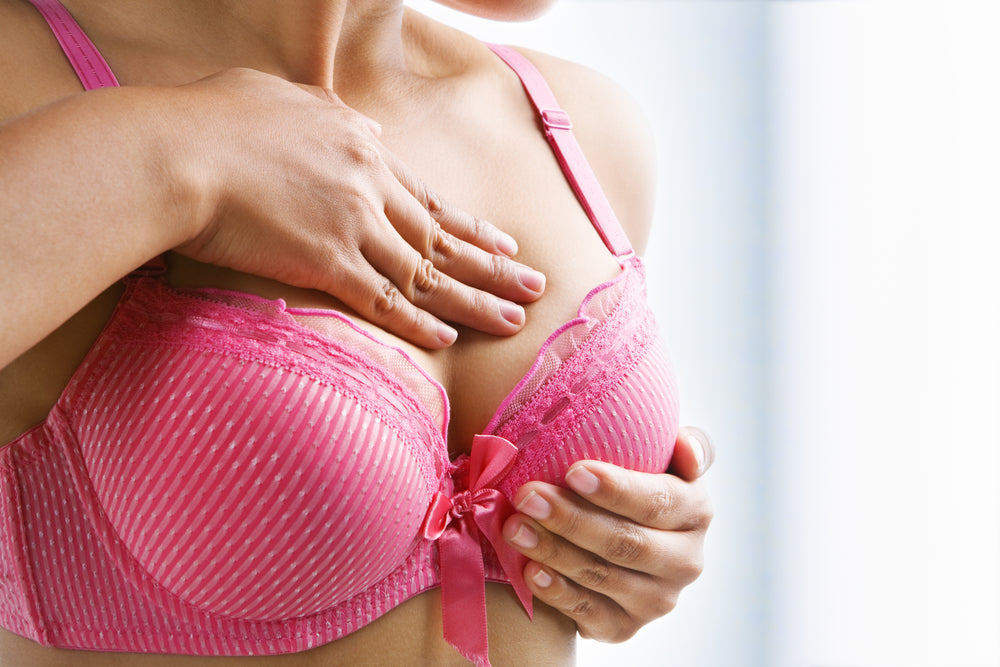Breast health is one of the single most import things all women should be aware of.
From regularly checking your breasts to knowing the warning signs, there are plenty of things you can do to promote healthy breast care.
Breast cancer is the most common form of cancer in the UK, with 1 in 8 women being diagnosed during their lifetime and despite continued research, one person is diagnosed every 10 minutes.
Here at Boobuddy we want to promote healthy breast care and have developed a unique breast health guide for you to read and share with others.
Self-Examination
You are the best person to understand your breasts and discover what is normal for you. Everyone is different which is means everyone’s breasts are different but that also means that you have to be aware of any changes.
Self-examination is a key factor in early detection of breast cancer and it can be done with very little effort.

Your breast health can be checked once a month via self-examination. Women of all ages are encouraged to carry out this self-examination so they can really get to know their breasts and be able to easily detect if anything is abnormal.
The best time of the month to examine yourself is several days after your period ends, as this is when your breasts are least likely to be swollen and tender.
How to Perform Breast Self-Examination
There are a number of ways in which women can conduct a self-examination including in the shower, in the mirror and when lying down.
1. To check the outer half of your breast, lie down and roll on to your left side. Place your right hand on your forehead and your breast should lie flat.
2. Using your three middle fingers, move your fingers in a circular motion. As you make these small circles, alternate the pressure your putting on the breast to get a good feel of all the breast tissue. Make sure you’re applying light, medium and deep pressure to each area of the breast.
3. The examination should start in your armpit and move down to just below the bra line. Continue this movement vertically until you reach the nipple, but do not take your hands off your breasts to ensure you cover everything.
4. When you reach the nipple, roll on to your back and place your left arm at a right angle. Check the nipple area by using the same circular pressures that was applied to the rest of the breast. Then examine the remaining breast tissue using the vertical movement used before until you reach the middle of your chest.
5. Repeat the above on the left-hand breast.

Mirrored Self-Examination
Another way to check your breast is by simply looking at them in a mirror and pay particular attention to the following.
• Shape: Compare your left breast to the right breast. Breast are often not perfectly symmetrical but a sudden change in size should not occur.
• Skin: Check for rash, redness, puckering, dimpling, or orange-peel-textured appearance.
• Nipples: Check for any physical changes such as inversion, scaliness, redness, itching, swelling, or discharge of the nipple.
• Veins: Check for a noticeable increase in size or quantity of veins in comparison to the other breast.
This process of self-examination should be conducted every month to maintain breast health awareness. If you do see or feel something that is a little out of the ordinary for your breasts, don’t panic but do make an appointment with your GP to get a professional opinion. About 80% of lumps found are not cancerous so try not to panic if you do notice a change.
Attend Breast Screenings
In the UK, the NHS offers free breast screenings to women aged 50-70.
Breast screening involves having an X-ray (mammogram) at a special clinic or mobile breast screening unit that is located within your area. Each breast will be examined one at a time and the breast will be placed on the mammogram machine. The x-ray machine will gently but firmly compress and two X-rays will be taken of each breast at different angles.

It will take around 2 weeks for your GP to get the results of your mammogram with 1 in 25 women being called back for further examination, but this does not mean you have breast cancer.
If you are younger than 50 or older than 70 and wish to have a mammogram, you can still have one by speaking your GP who will organise a breast screening appointment for you.
Breast screenings are nothing to be worried about and are always carried out by a female practitioner.
Other Ways to Achieve Breast Health
Maintaining good breast health is all about being aware of your breasts and knowing what is normal for you. Self-care is so important so it is always advised to eat a well-balanced diet, exercise regularly, drink plenty of water and maintain a healthy weight.
Other ways you can promote good breast health is to wear a well-fitting bra, reduce movement of the breasts during exercise and reduce your consumption of alcohol and cigarettes.
Your breast health should become part of your monthly, weekly and daily routine and you should share these breast health tips with your friends, family and colleagues to help more women become more breast health aware.

